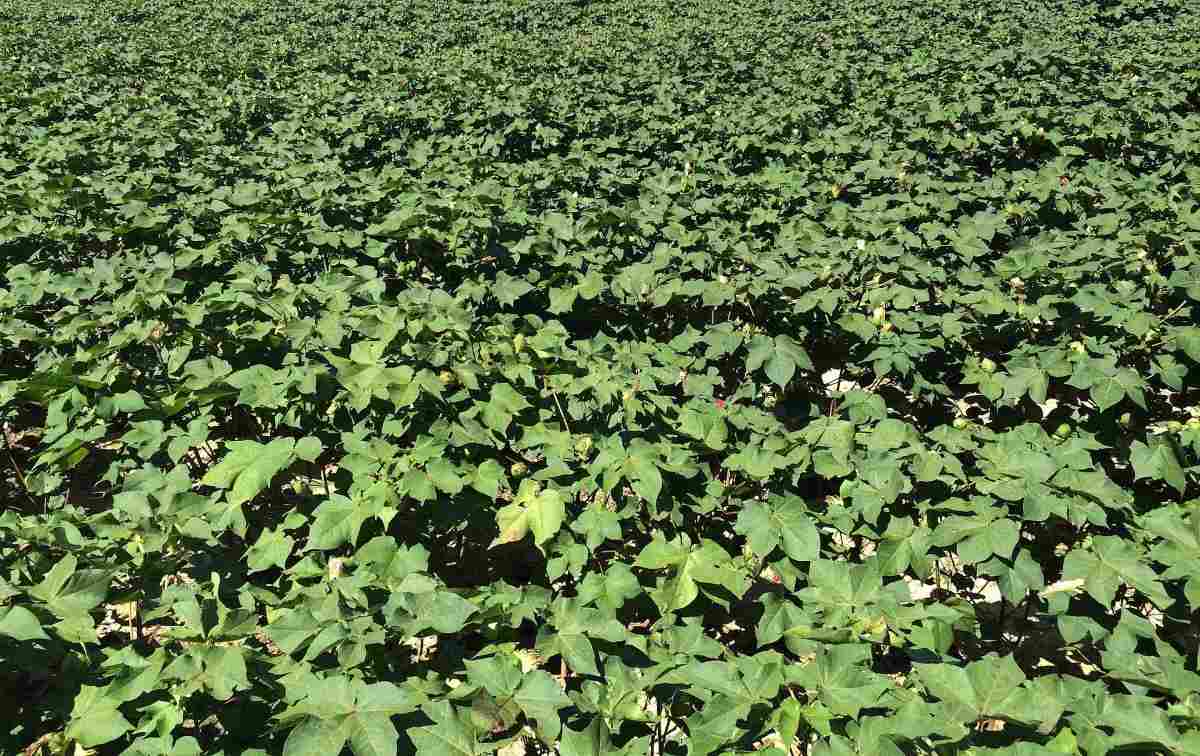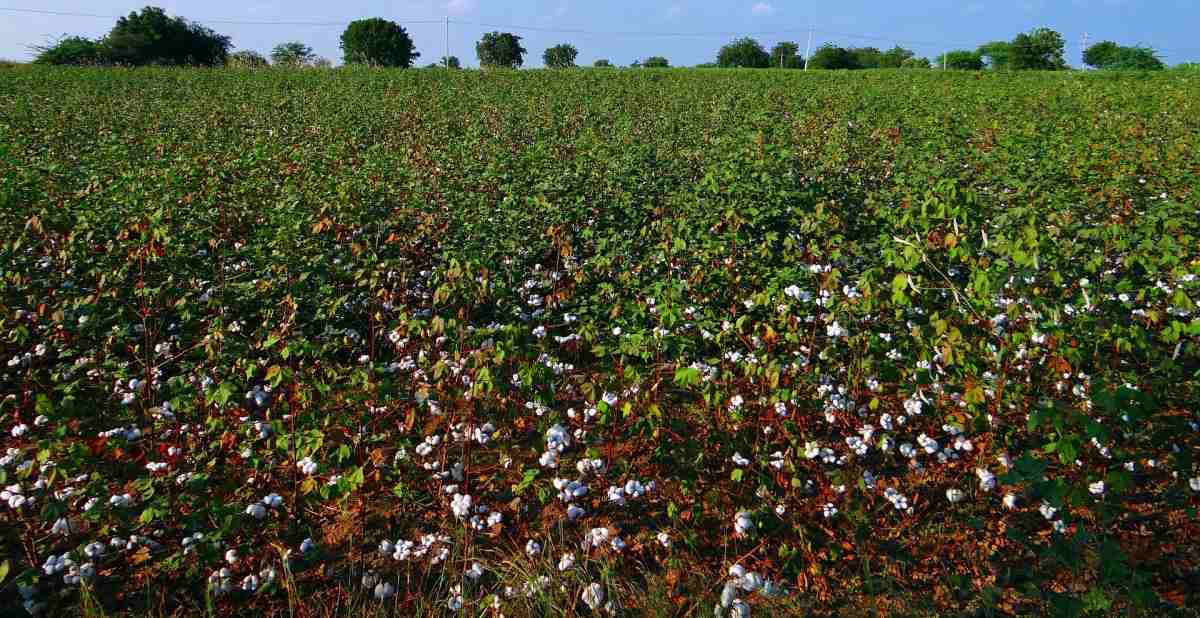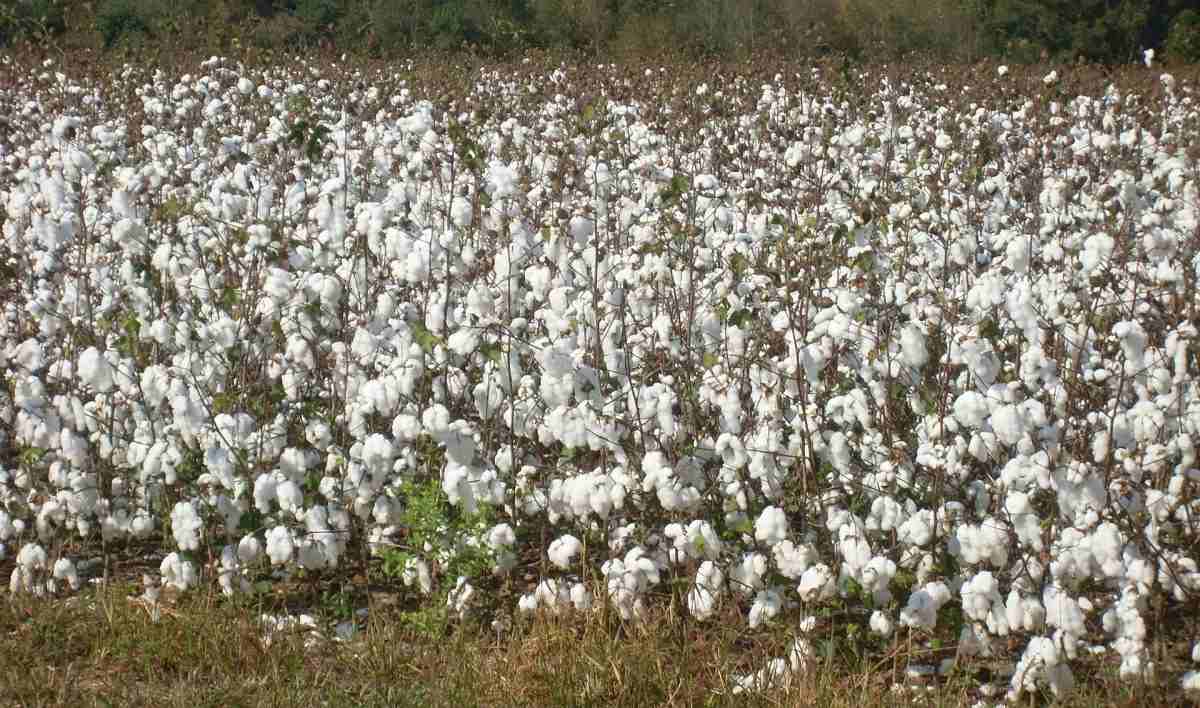Introduction to Cotton seed germination: Cotton is one of the important fiber and cash crops of India. It provides the basic raw material or Cotton fiber to the Cotton textile industry. Cotton in India provides direct livelihood to 6 million farmers and about 40 to 50 million people are employed in the Cotton trade and its processing.
The cotton plant is a warm climate plant. It cannot tolerate a temperature range cooler than 60°F. If you live in a cooler climate, it is better to start the plant indoors and transplant it out once the temps have warmed up. Cotton is self-pollinating, so you don’t need a lot of plants.
Major constraints in Cotton production are;
- Nearly 65 percent Cotton area is rain-fed, mostly in the Central and Southern States
- The cotton plant is highly prone to pests and diseases.
- Wide fluctuation in Cotton prices, inadequate market infrastructure, and export policy.
In this article we also discuss below topics;
- How long does it take for the Cotton seed to germinate
- How do you germinate seeds in Cotton
- Can you grow Cotton from seeds
- Process of growing Cotton from seed
- Time to take Cotton seeds take to germinate
- How do you germinate Cotton seeds
- The Cotton seed germination temperature
- Cotton seeds germination period
- Tips for Cotton seeds germination
A step by step guide to the Cotton seed germination process
In case if you miss this: Almond Seed Germination, Time, Temperature.

Conditions for Cotton cultivation
Cotton is grown in tropical & sub-tropical conditions. A minimum temperature of 15ºC is required for better germination at field conditions. The optimum temperature for vegetative growth is 21 to 27ºC and it can tolerate temperature to the extent of 43ºC but temperature below 21ºC is detrimental to the crop. Warm days of cool nights with large diurnal variations during the period of fruiting are conducive to good boll and fiber development. It is grown on a variety of soils ranging from well-drained deep alluvial soils in the north to black clayey soils of varying depth in the central region and black and mixed black and red soils in the south zone. Cotton is semi-tolerant to salinity and sensitive to waterlogging and prefers well-drained soils.
Soil texture and fertility of land must be according to the requirements of seed crops. The land must be free from volunteer plants, weed plants, and other crop plants. It must be comparatively free from soil-borne diseases and insect pests. In the previous season, the same crop must not have been raised. If, irrigate the field well in advance and allow the self-sown seeds to decay which left in the previous season. Choose land with good soil fertility and drainage facility. Ideal conditions for the Cotton plant cultivation are;
- Long vegetation periods about 175 to 225 days without frost.
- Constant temperature ranges between 18 and 30°F.
- Ample sunshine and fairly dry conditions.
- A minimum of 500 mm of water between germination and boll formation.
- Deep, well-drained soils with good nutrient content.
Cotton must be planted in well-prepared seedbeds that are firm, warm, and moist. Planting must be based on soil temperature and the weather outlook for a month after planting. Treating planting seed with fungicides helps ward off seedling diseases.
Don’t plant the Cotton seed too deep in soils that are overly wet, cold, compacted, or high in chemical concentrations. It is important to apply herbicides as indicated on the label to avoid root pruning or seedling injury. Fertilizer to be applied in a manner that reduces the potential for seed and plant injury.
Planting Cotton outdoors from seed
Cotton is planted outdoors first check the soil temperature with a soil thermometer to ensure that it is at least 60ºF with six inches down. And keep checking this for three days every morning. Once the soil maintains this temperature range, you can work the soil, adding an inch or so of compost to it. Compost is a great source of nitrogen, potassium, and trace minerals essential for strong plant growth. Plant Cotton seeds in groups of three, one inch deep and four inches apart. Then cover and firm the soil. Within a couple of weeks, the seeds must begin to sprout. Under optimal conditions, they will sprout within a week but temps under 60F will prevent or delay the germination process.
Selection of seeds for Cotton seed germination
For getting uniform growth, quality seeds must be used. Always fresh seeds alone must be used. Avoid using old stored seeds because seeds usually stored for more than a year will have low germination potential. For getting quality seed, soak the delinted seeds in double the volume of water for 3 hours. Dry the seeds under shade to the original moisture content and then again place the shade dried seeds in water. The dead seeds will float on the water column and remove all the dead seeds. Seeds settle at the bottom sinkers all of the good quality. The heavier the seed, the greater will be the germination process and vigor potential. The good plumpy seeds ascribed to the relatively large embryo associated with a large number of food reserves and efficient mobilization enabling the production of seedlings to large size.
Cotton seed placement
Plant Cotton seeds in a location with loose, rich soil where the plants will receive at least 4 or 5 hours of direct sunlight every day. You can grow it in a container, but the container should be at least 36 inches deep. It helps to work an inch or compost into the soil before planting. Putting them in the ground too soon slows seed germination. Wait until temperatures are consistently above 60ºF.
It takes 65 to 75 days of temperatures above 60ºF for Cotton to go from seed to flower. The plants require an additional 50 days after the flowers bloom for the seed pods to mature. Sowing Cotton seeds in cool climates could find that they can bring the plants to flower, but don’t have enough time remaining to watch the seed pods mature.
Effect of constant temperature on the Cotton seed germination
The effect of constant temperature on the seed germination rate and percentage of two Cotton seed lots was determined using a thermal gradient plate. The optimal temperature zone for seed germination was 28 to 30ºC. As temperature decreased from the optimal zone, the rate of germination decreased but germination percentages during the 10 days were significantly lower only below 20ºC. As the temperature increased above the optimal zone, the rate of seed germination decreased and the percentage of germination sharply decreased above 32 to 34ºC.
You should not miss the Sunflower Cultivation Income, Yield, Project Report.
High-quality Cotton seed performed better than medium quality seed for a low-temperature range (16ºC to 22ºC), but the most intriguing results observed for the high temperatures range (36 ºC to 38ºC). The germination of the medium quality Cotton seed was consistently higher than for high-quality seed, particularly at 38ºC after the second day of evaluation.
The Cotton plant can self-pollinate or cross-pollinate with the help of bees that transfer pollen between the flowers of different plants. If conditions are favorable, the pollen grain will germinate after it is stuck to the stigma and form a pollen tube, which extends through the tissues of the pistil. Once the pollen tube reaches the ovary, fertilization can occur.
Different stages of Cotton growth
The developmental phases for the Cotton plant can be divided into five growth stages;
- Germination and emergence
- Seedling establishment
- Leaf area and canopy development
- Flowering and boll development and
- Maturation
The transitions between these all stages are not always sharp and clear. Each stage may have different physiological processes operating within specific requirements. If producers are aware of these stage-dependent differences in Cotton growth, then many problems in crop management can be avoided, which will result in higher yields and profits.

Seed germination and seedling emergence effect in Cotton
Sow the seeds when the soil temperature is close to 60ºF first thing in the morning for several consecutive days. If the soil is too cool, the Cotton seeds will rot. Plant the Cotton seeds in groups of 3, spacing them 4 inches apart. Cover them with about an inch of soil and water the soil so that the moisture penetrates to a depth of at least 6 inches. Gardeners new to planting Cotton may wonder which way to plant Cotton seeds, which way is up or down. The root will emerge from the tip of the seed, but you don’t have to concern yourself with placing the Cotton seed in the soil just so. No matter how you plant it, the Cotton seed will sort itself out.
Seed germination and seedling emergence are the foundation of your total Cotton crop. If you closely examine the inside of the seed, you will find all of the essential parts that form the mature plant. There are two well-developed cotyledons; this will form the seed leaves which manufacture food for the young seedling. Located between the cotyledons is a structure referred to as the epicotyls which are the shoot that will form the major stem. The next identifiable part is the hypocotyls, and this is the first plant part seen above ground in the emergence process. The tip of the small seedling is referred to as the radical and it is the first structure to emerge from the seed coat and will ultimately form the root structure of the Cotton plant.
The absorbed water follows the tissue around the embryo to the radical cap at the narrow end of the Cotton seed. And as it moves, the water softens and penetrates the tissues, and triggers a wide range of chemical reactions. By now, moisture is penetrating all parts of the seed coat; the swollen embryo appears ready to burst. The radical forces its way through the tiny opening at the pointed end of the seed coat and then pushes down into the soil.
At the same time, the hypocotyl has begun to stretch and forms an arch as it makes its way to and through the soil surface. If the seed has been located in a firm seedbed the protective seed coat will remain underground as the expanding cells straighten the hook and pull the cotyledons and the epicotyl or shoot free eventually lifting them above the soil. Exposed to light, the newly unfurled seed leaves turn green and begin to manufacture food–a short-term function that they will perform until the true plant leaves take over. Soon the bud above the cotyledons enlarges and unfolds to form the stem and the true leaves, branches will develop there.
Under favorable conditions, seedlings emerge can occur in about 4 to 5 days after planting. Seedling emergence will take longer if seed is planted in cool soils. Temperature ranges below 60°F are detrimental to the germination process, emergence, and seedling growth. During the first 60 to 100 hours of germination, the radical tip is simply damaged by chilling, lack of oxygen in the soil, or too much moisture. If the radical tip is killed, a shallow system of secondary roots develops that makes the plant more subject to moisture stress later in the season.
As a rule of thumb, planting must be delayed until the soil temperature at the 8-inch depth averages a minimum of 60°F for 10 days (temperature should be taken at 8 a.m.). Allowing soil temperatures to increase before planting will cut the time required for germination and seedling emergence and helps to ensure uniform stands. It is important to use high-quality seed and plant in a firm, well-prepared seedbed with adequate moisture. The seed must be planted at a depth of 1 to 2 1/2 inches, depending on soil type and availability of moisture. Planting too deep can reduce plant population and seedling health.
Soil effects on Cotton seed germination and early root growth
Root growth dominates the growth of the Cotton plant during the germination process and seedling establishment. The taproot can be as deep as 10 inches by the time the cotyledons emerge. And this is a critical time for the development of the root system. Cold soils, seedling disease, low soil pH, water stress, hardpans, and herbicide injury all inhibit root growth and plant development, but careful crop management can minimize most of these stresses. The plant roots absorb water and nutrients that are vital to the development of the plant and any hindrance of root development in these early stages of Cotton growth can cause a disappointing production season.
You may also check the Cold Pressed Oil Project Report.
Cotton emerges the quickest from warm and moist soil. Low temperatures below 60F or less than adequate soil moisture may hinder germination by slowing metabolic processes. Physical impedance, such as crusting, does not slow seed germination, but it can prevent the hypocotyls from emerging. This causes thickening of the hypocotyls and a condition referred to as “big shank” or “thick legged” Cotton, resulting in reduced seedling vigor.
Cotton plant care
You will want to keep the plants watered throughout the summer months as part of optimal Cotton plant care. At around 4 to 5 weeks, the plants will begin branching. By 8 weeks you should start to notice the first squares, after which blooming soon follows. Once the creamy and white flowers have been pollinated, they will turn pink. At this stage, the plants will begin producing a boll (which becomes the ‘Cotton ball.’). Water must be given during this entire process to ensure adequate plant growth and production. The Cotton plant is ready for harvesting once all of the bolls have cracked open and looks like a fluffy ball. This normally occurs within 4 months of planting. The growing Cotton plants will naturally dry up and shed the plant leaves just before the bolls cracking. Be sure to wear gloves when harvesting Cotton from plants to protect your little one’s hands from getting cut.
Some questions about Cotton seed germination

How deep should Cotton be planted?
If they emerge, seedlings are weaker and more vulnerable to thrips and seedling diseases. Cotton must be planted at 0.5 to 0.7 inches deep at most, from the top of the seed to the top of the soil.
How big can a Cotton plant get?
The Cotton plant produces a single upright stem with a semi-woody texture that grows to a maximum height of about 6 feet. Its leaves are dark green with 3 to 5 lobes that reach roughly 2 to 4 inches in overall length.
What is the big problem with the growing Cotton crop?
Well, Cotton is attacked by many pests and diseases, so people use many kinds of pesticides. The cultivation of cotton may result in contamination of soil, soil erosion, and loss of soil biodiversity. Ultimately, this will end up in poor yield of crops grown in these soils.
You may also like the Growing Persimmons in Containers from Seed.